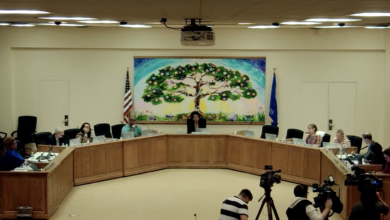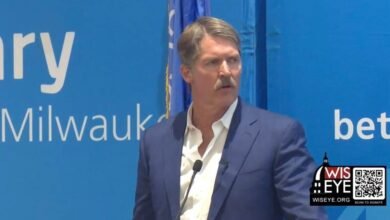Coal to drop to 13% of state’s energy mix by 2030, draft report shows

The share of Wisconsin’s electricity generation coming from coal is set to drop from 27% in 2022 to just 13% in 2030, according to a draft report from the state Public Service Commission.
The PSC recently released a draft copy of its latest Strategic Energy Assessment, covering the state’s electricity supply over the coming six years.
As a result of planned coal retirements and new projects, natural gas is projected to rise from 22% to 28% of state energy generation. When combined into one fossil fuel category, coal and natural gas together would go from 49% to 41% between 2022 and 2030.
Meanwhile, wind will go from 19% to 24% and solar will rise from 3% to 14%. Plus, total CO2 emissions are projected to hit the 80% reduction target by 2030 from 2005 levels, report authors wrote.
The agency is taking public comments through Sept. 26 on the document, which is based on historical data and forecasts collected from utilities in the state. The final version of the SEA will include updated figures from utilities.
These electricity providers say they plan to retire about 3,100 megawatts of in-state generation by 2030, including three of the seven utility-scale coal plants operating in Wisconsin, which have combined capacity of about 2,800 MW. Under updated plans released in summer 2022, those three plants would be fully retired by 2026, according to the report.
Utilities say they plan to add about 6,000 MW of solar energy capacity, 3,400 MW of natural gas and 1,600 MW of wind power by 2030, complemented by about 1,000 MW of planned energy storage connected to planned solar projects.
The report also notes PSC staff conducted modeling for various scenarios with different CO2 emission reductions and electric demand growth. Under the framework for limited CO2 reductions, more natural gas resources were used in the model to meet the demand linked to planned retirement and long-term load growth.
Under the framework assuming “more aggressive” CO2 reductions — more in-line with utilities’ goals — the model used less natural gas and leaned more on renewable resources, such as solar, battery storage and wind.
This modeling also pointed to the need for “flex” resources, which have no carbon emissions, according to the report. Flex units have characteristics of reciprocating internal combustion engine, or RICE units, but with “extremely high” fuel costs, to ensure they’re only used when absolutely needed, the report shows. That could include traditional RICE units combined with carbon capture and storage, engines powered by hydrogen and more.
“These planning considerations and cost assumptions may evolve over time if cost profiles for existing resources change, or if future technological developments such as long-duration energy storage support the emergence of other cost competitive generation options,” report authors wrote.
Citizens Utility Board Executive Director Tom Content notes one drawback with the draft report is the data were submitted months ago, so more recent developments aren’t captured. He pointed to new planned data centers as one example, noting projected energy demand growth will be even higher than the report details.
“Data centers take a lot of energy, and the fact is that the entire utility industry nationally and regulators around the country are trying to figure out how the utility industry is going to meet the surge in demand that’s expected just from data centers,” he said yesterday in an interview. “Let alone all the reshoring of manufacturing and electrification and other trends that are expected to increase demand.”
He argues this issue of growing energy demand “and what it could cost customers really needs to be evaluated carefully” when the PSC comes out with its final report later this year. And he also said the SEA has more of a focus on resource planning than past reports.
“We appreciate that, and we think better planning is going to be critical,” he said.
The commission will hold a public hearing on the draft SEA on Aug. 14.
See the draft document here. See coverage and video from a recent WisPolitics event where PSC Chair Summer Strand discussed the state’s energy outlook.
Source link




